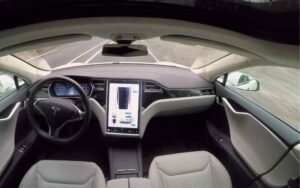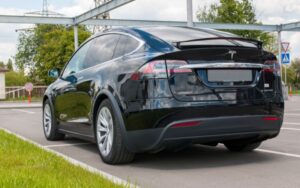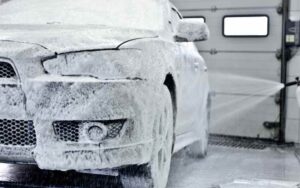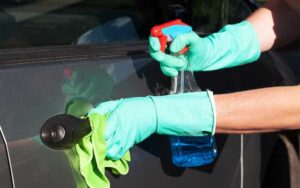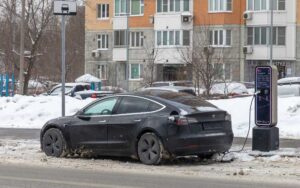Tesla Jump Start: All You Need To Know
If your Tesla ever runs out of charge in the middle of the road, you may have to jumpstart it, especially if there is no supercharger near you.
You can use another Tesla vehicle to jump-start your Tesla if you run out of battery. The jump-starting process differs depending on whether your battery is lithium-ion or lead-acid.
You will have to open the hood and connect the low-voltage power supply’s red (+) cable to the red (+) terminal on the low-voltage battery and do the same with the black (-) cable and the black (-) terminal. Turn on the power supply and touch the touchscreen to wake up the system.
Knowing how to jumpstart a Tesla may come in handy if your battery ever runs out some distance from the nearest supercharger.
This article will show you how to jumpstart a Tesla and also whether you can jumpstart your gas car with a Tesla.
Do Teslas Ever Need Jump-starting?
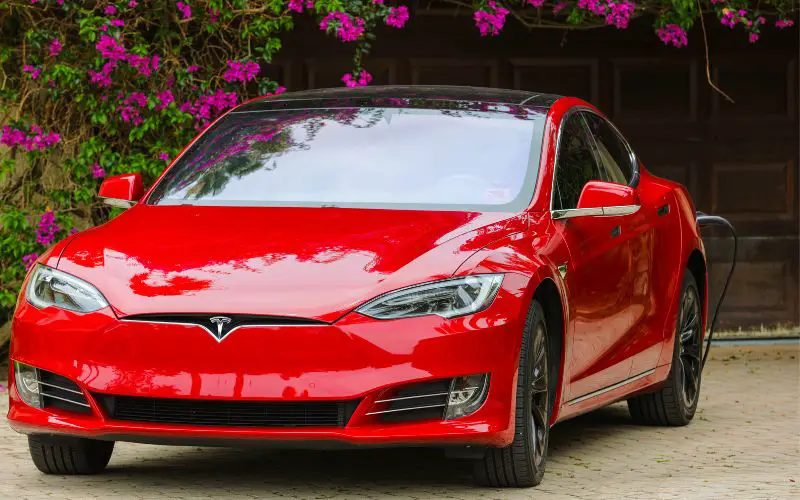
With new updates, Tesla users get alerts when their 12V battery is about to go out and must charge it to avoid being stranded.
However, if you fail to charge the battery, the battery will go out, and you’ll need to jump-start the Tesla.
If your Tesla battery dies by the side of the road and leaves you stranded, you’ll have to jumpstart it using another Tesla.
Electric vehicles like Teslas use lithium-ion batteries to power cars; lithium-ion batteries are the same type in phones, hoverboards, and other small, high-powered devices.
Lithium-ion batteries are powerful, and they offer longevity; electric cars use several lithium-ion batteries at once to generate enough power to replace a combustion engine.
However, it is impossible to charge the main Tesla battery while driving like hybrid batteries; instead, the battery will have to be charged from an external output.
Electric cars are innovative, but most of the time, the batteries run out of power when you need them most, and at that point, you’ll have to jump-start the vehicle.
If your Tesla dies entirely and has no power source, the car will become disabled (which means the locks and powers won’t work. This means that you’ll have to jump-start the 12V.
If the 12V battery in an electric vehicle such as a Tesla dies, you can pull it out and charge it using a bench charger or jolt it back to life using a pair of jumper cables.
If no jumper cable is available, you can jolt your Tesla back to life with a 12V system from another vehicle or bring it back with a portable booster pack.
How Long Before a 12v Tesla Battery Dies?
On average, Tesla owners can use their car’s battery for 267 miles of range after a single charge of their battery before they have to charge it again.
However, Tesla batteries can last about 300,000 to 500,000 miles or 1,500 cycles, meaning an average person will use their battery for 22-37 years.
However, the Model 3, S, Y, and X have different full charge ranges.
Also, Tesla adjusts your available mile range based on driving conditions so that you can optimize your battery use.
In addition, your style of driving and battery capacity will also affect the range, but the Tesla Model S is the longest-range model; it goes up to 375 miles at full charge.
Recharging batteries contributes to their degradation over time, affecting your battery life as time progresses; this is more likely to happen if you charge from empty to complete daily.
Tesla’s battery technology makes your vehicle more reliable; studies suggest that performance only decreases by 10% after the battery reaches 160,000 miles.
That means that until your Tesla reaches that level, it’ll maintain top performance. Even if it wears out, Tesla warranties cover battery degradation.
Also, there are some things you can do to protect your Tesla’s battery.
- Only use superchargers when you have to; using them often can shorten the lifespan of the vehicles and affect battery capacity.
- Don’t charge above 80% or let the battery charge fall below 20%.
- Always maintain a regular charging habit.
- Drive more smoothly, and avoid excessive acceleration for long periods as it can drain the battery abruptly.
You can find out how long the battery of each Tesla model will last from the chart below.
| Model | Range |
|---|---|
| Model 3 Standard Range | 267 miles |
| Model 3 Long Range | 334 miles |
| Model 3 Performance | 315 miles |
| Model S | 375 miles |
| Model S Plaid | 248 miles |
| Model X | 332 miles |
| Model X Plaid | 313 miles |
| Model Y Long Range | 318 miles |
| Model Y Performance | 303 miles |
How to Jump-start a Tesla?
If your Tesla dies and you can’t charge it, you’ll have to jump-start it.
To jump-start your Tesla, follow the steps below.
- First, open the large circle on the driver’s side of the front bumper, called the tow eye.
To do that, push the right side till it falls inward, and pull the cover towards you. - When you open it, you’ll find the tow hook and some wires attached to the cover; the wires can also be in the hole. Pull out the wires gently.
- Take an external 12V jump starter and connect the positive red cable on the jump starter to the positive red cable of the car.
- Then, connect the black negative cable on the 12V jump-starter to the black negative cable on the car.
- Please turn on the jump starter’s power and leave it on until the front trunk of the Tesla pops open. Then, disconnect the wires beginning with the black cables and then the red.
- Then, connect the wires back to the tow cover and place the cover back by placing the wires back into the opening; put the cover back in place.
- Remove the large plastic panel that covers your 12V battery, which will be above the trunk compartment; pull the plastic panel up, and 12 clips will pop out of place.
- Next is a black cabin intake panel located on the Tesla’s passenger side; pull the clips upwards and remove the cabin intake panel.
- Next, connect the positive red cable on your battery to the positive red terminal on the 12V battery and the negative black cable to the negative black terminal.
- Turn on the external power supply and wait for at least 10 mins. Afterward, you can power up the car’s computer, and the touchscreen turns on.
- When the computer powers up, disconnect the cables starting with the black one and then the red.
- Put the two black panels back in place, then ensure they align before applying pressure; otherwise, they will break easily.
- Finally, drive to a charger immediately to connect the charger. Once the main battery has charged sufficiently, it will begin charging the 12V battery.
Can You Jump-start a Tesla With Another Tesla?
You can use another Tesla to jumpstart your Tesla; usually, you need a lithium-ion jump starter for this process.
Most Teslas have lithium-ion jump starters in their trunks; if yours does not come with one, you can purchase one and keep it in your Tesla trunk.
However, there is an alternative for jumping a Tesla. You can try jump-starting the vehicle by charging your battery with a unique connecting lead; you can purchase the connecting lead from stores.
In addition, the jump-starting process differs depending on whether the low-voltage battery is lithium-ion or low-voltage.
Before you attempt to use Tesla to jumpstart another Tesla, find out which battery your car uses. Touch controls > software > additional vehicle information.
Can You Jump-start a Gas Car With Your Tesla?
You can jump-start a gas car with your Tesla; attempting to jump-start another car is also not advisable.
This is because the Tesla battery has low voltage power compared to a combustion engine’s high voltage power.
So, if you try to jump-start a gas car with your Tesla, it can make your Tesla’s battery die. The lithium-ion battery in your Tesla does not have enough juice to power a gas car.
However, you can use your Tesla car to charge other Teslas, and it can also charge other 12V vehicles.
So, it is good to use a Tesla vehicle to jump-start a regular car if you find the 12V battery.
All Tesla vehicles have a 12V lead-acid battery that you can use to charge computer systems, lights, and any other electrical components.
However, it is often challenging to locate the 12V battery, but you can use the battery and jumper cables for charging EV batteries.
However, do not use your Model 3 lithium-ion battery to start a gas car, as this will cause severe damage to your EV engine.
However, you can use your EV vehicle to jump-start another one by joining the 12V batteries together with jumper cables, which should always be in your trunk.
But always disconnect the gas car from your Tesla before you start the gas car so that you don’t cause any damage to your Tesla engine.
You can’t use a Model 3 Tesla to jump-start a gas car, but you can use a Model S, Y, and X to jump-start a gas car.
However, you can keep a liLi-ion jump starter kit that can act as a conventional battery in your trunk.
The process of jump-starting another EV is the same as described above.
- Find the second lead-acid battery powering the car’s systems. To do that, you’ll have to find the tow eye cover.
- Next, connect the battery’s positive terminals and negative clip head to the body of your Tesla. There will be sparks from a red terminal.
Remember that it is not advisable to jump-start regular cars with eclectic cars, even though you can generate enough power from an EV.
The Li-ion battery in your electric vehicle is low-voltage and not suitable for charging other cars.
Also, the 12V secondary battery powers your electric car’s internal systems, and they may get compromised or wholly damaged en route.
In contrast, you can use a conventional battery for charging your Tesla battery without damage or risk of damage.

Hey, I’m Michael Davis, a 35-year-old with a degree and a love for cars and tech. Since I was a kid, cars have been my thing—so much that I even thought they ran on magic beans! Fast forward, and I’ve built Vehicle Army, your one-stop-shop for easy-to-understand car facts.

